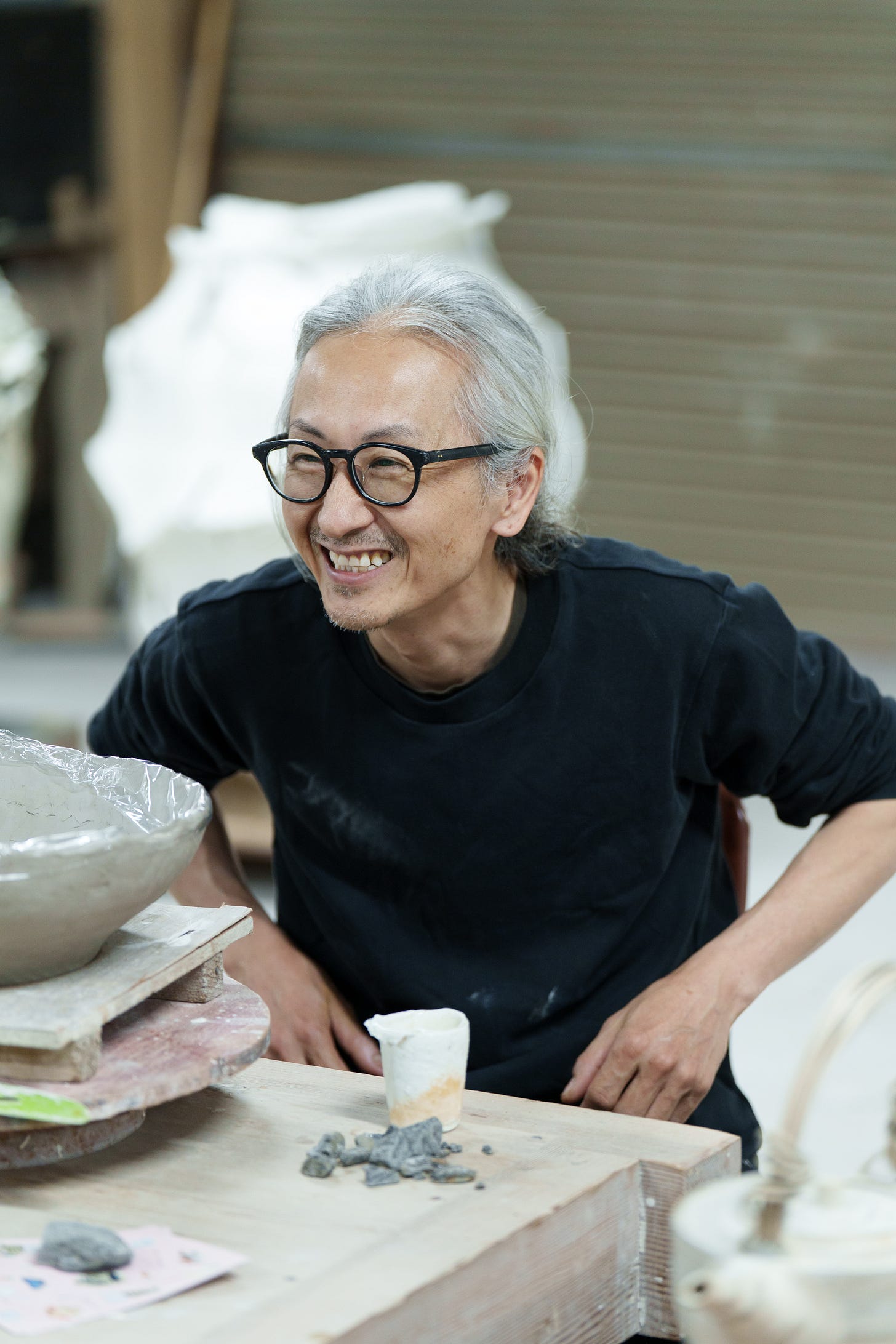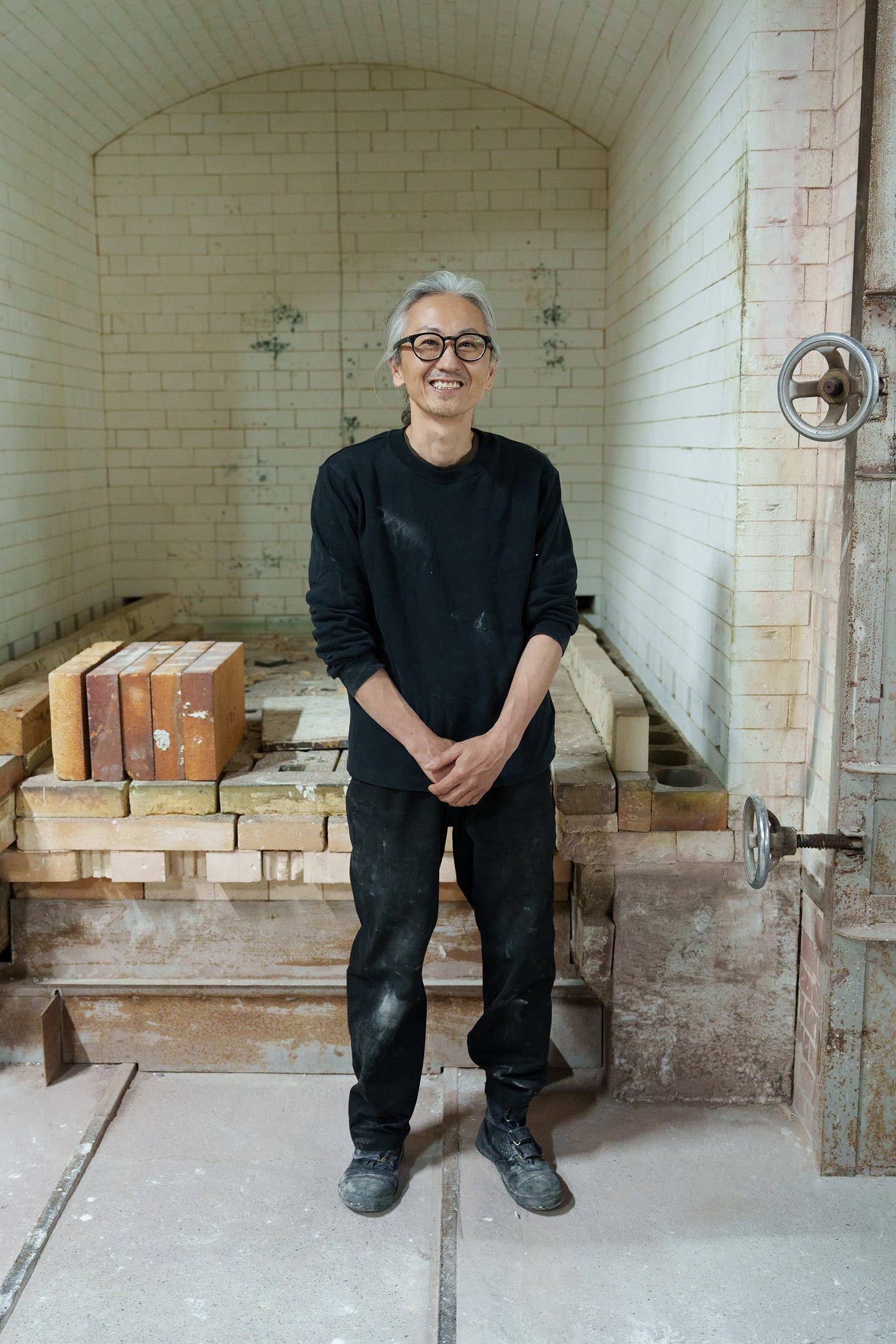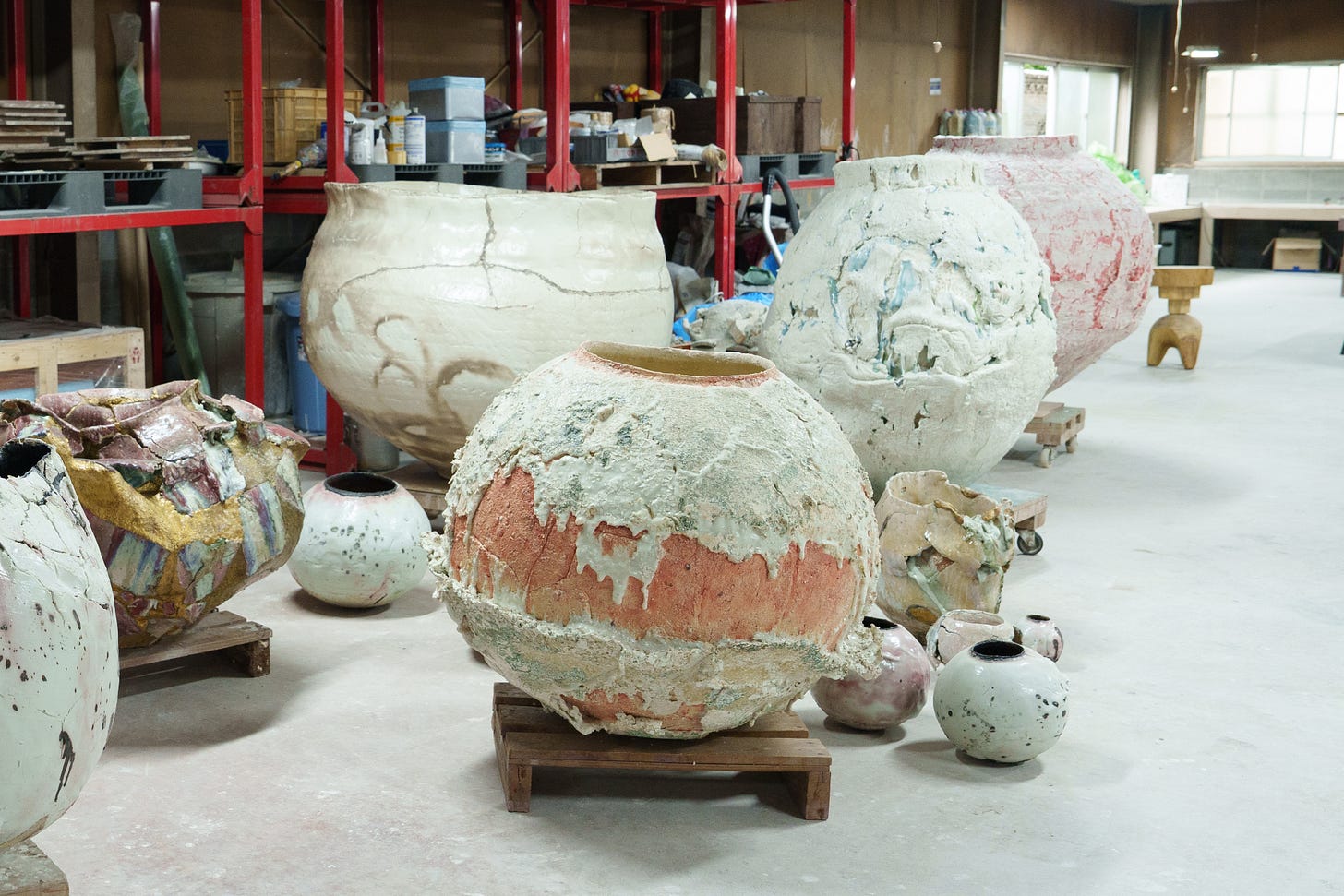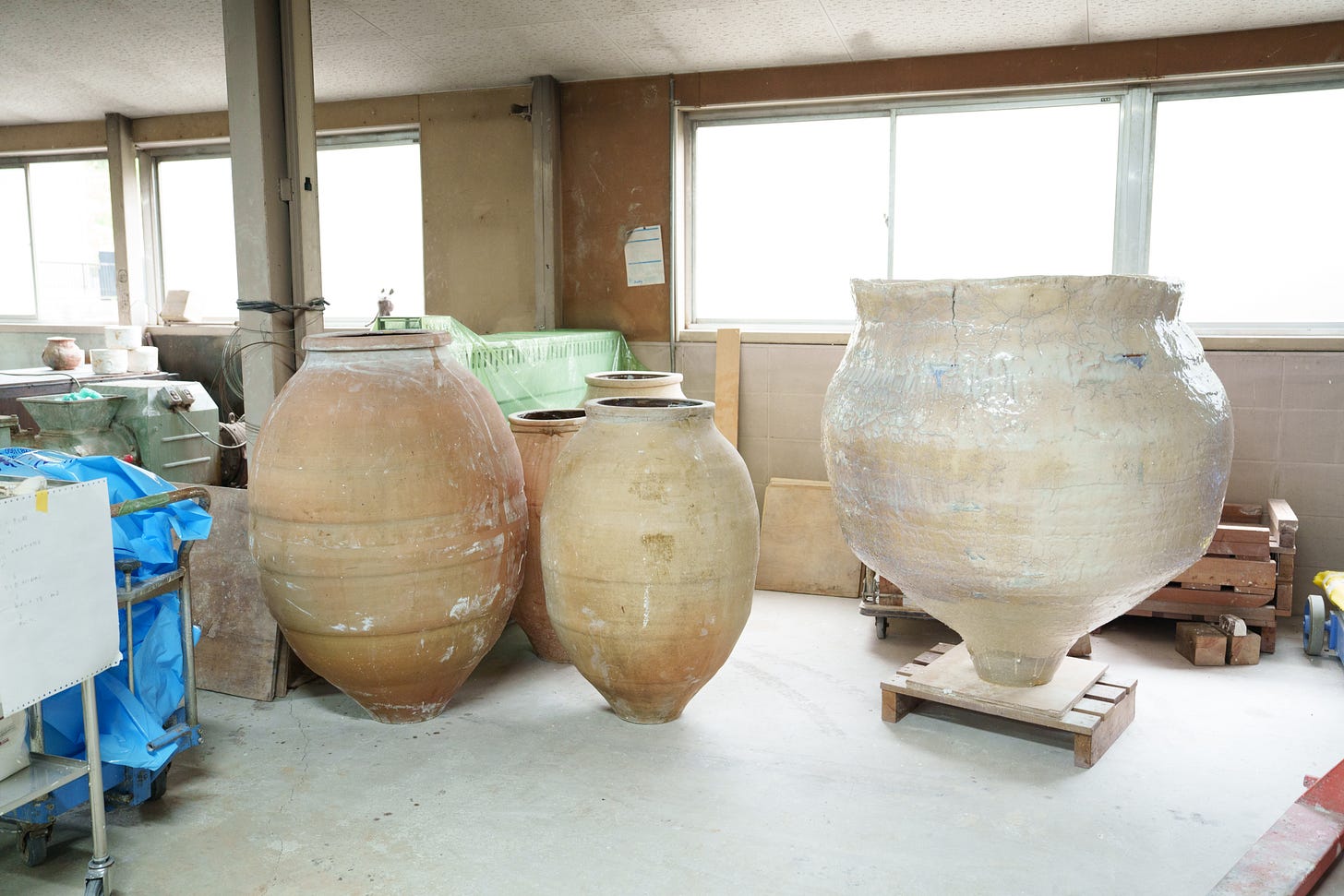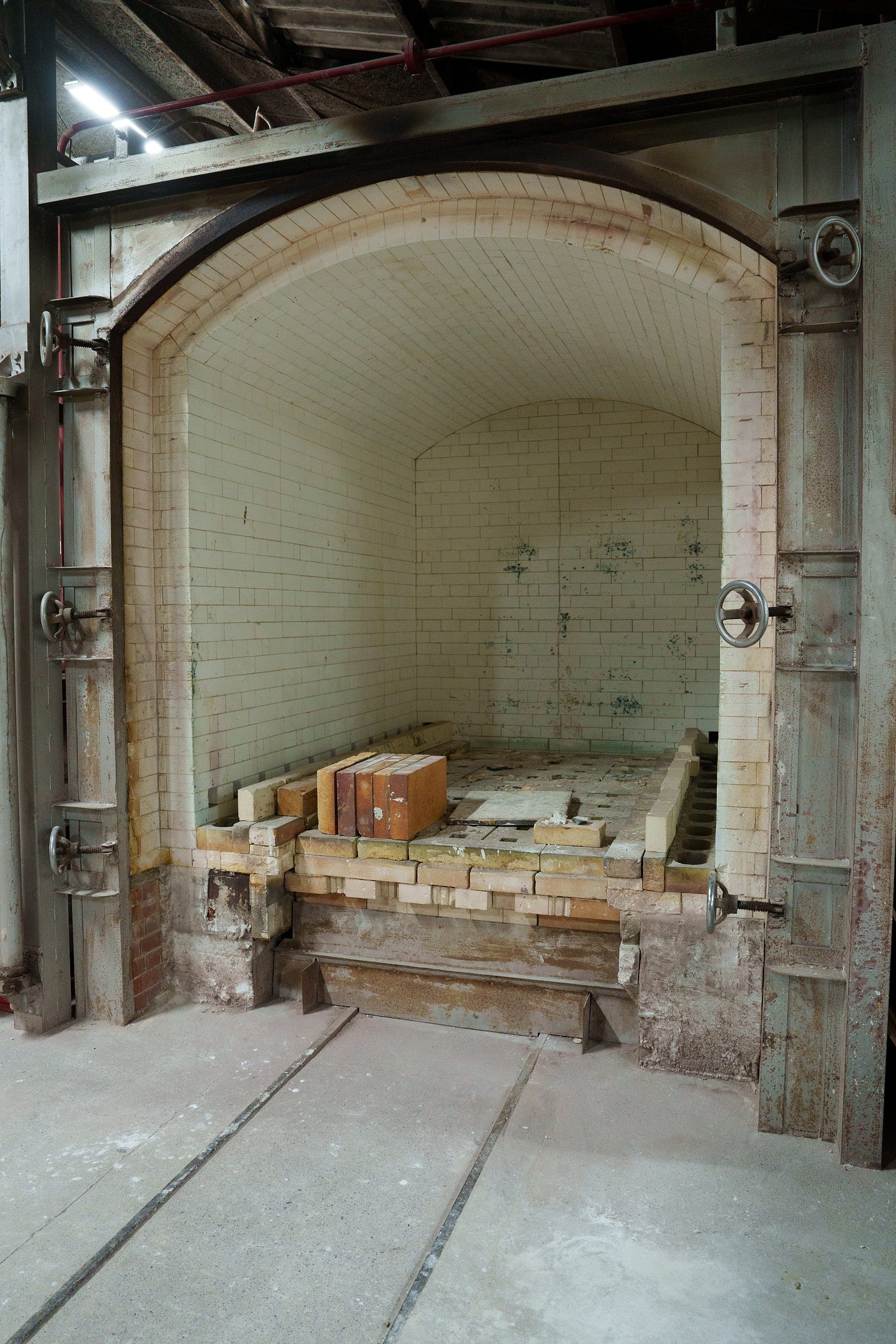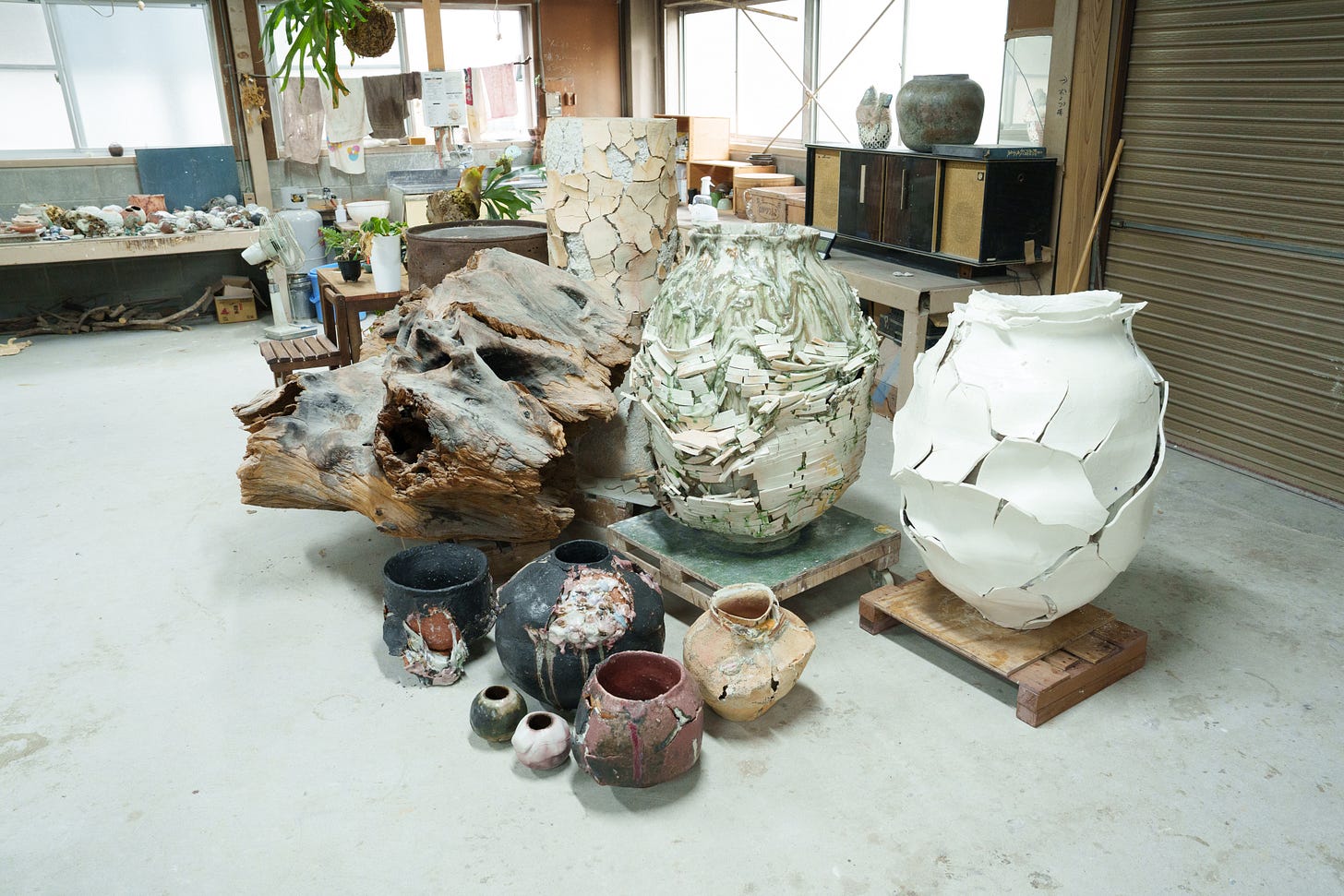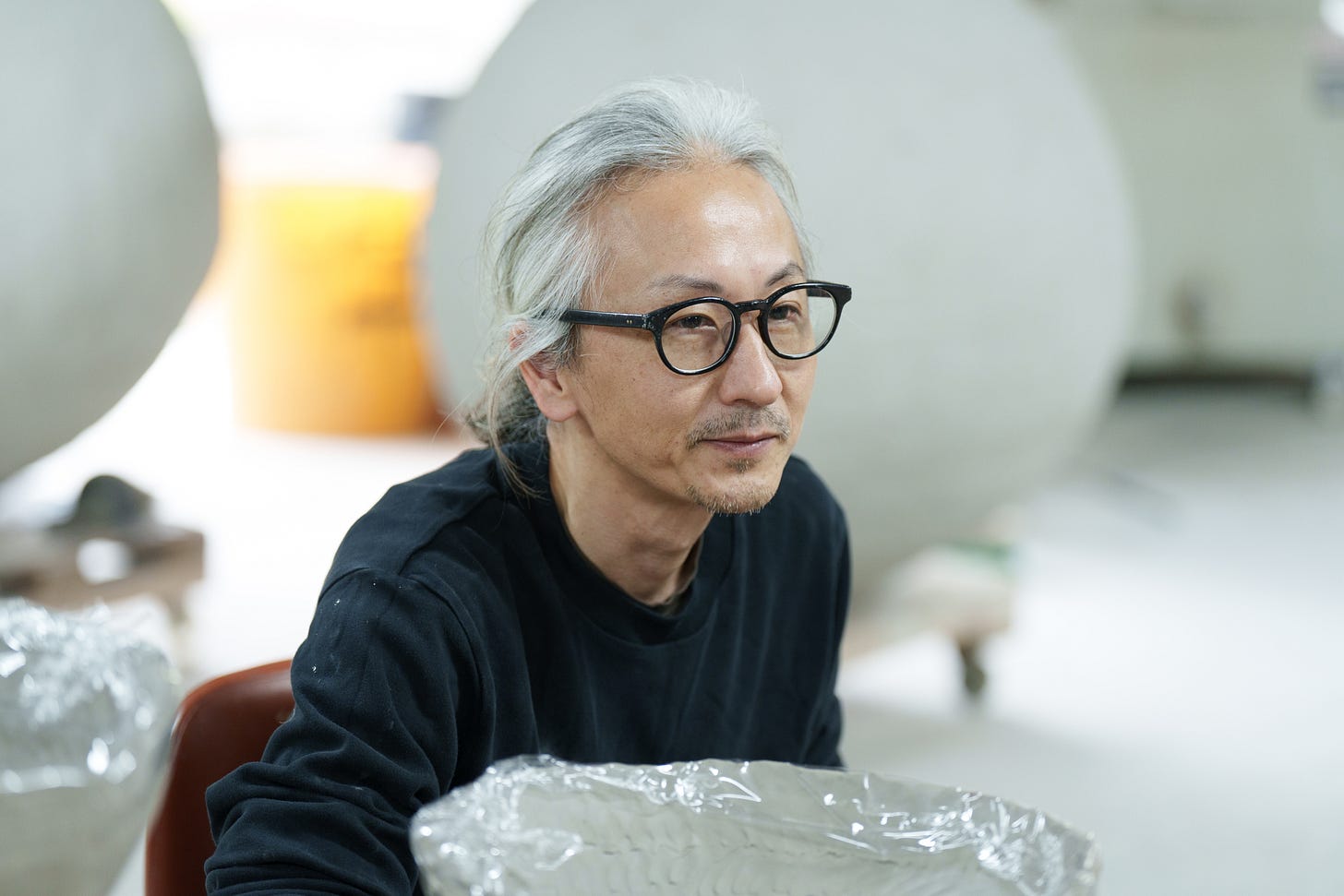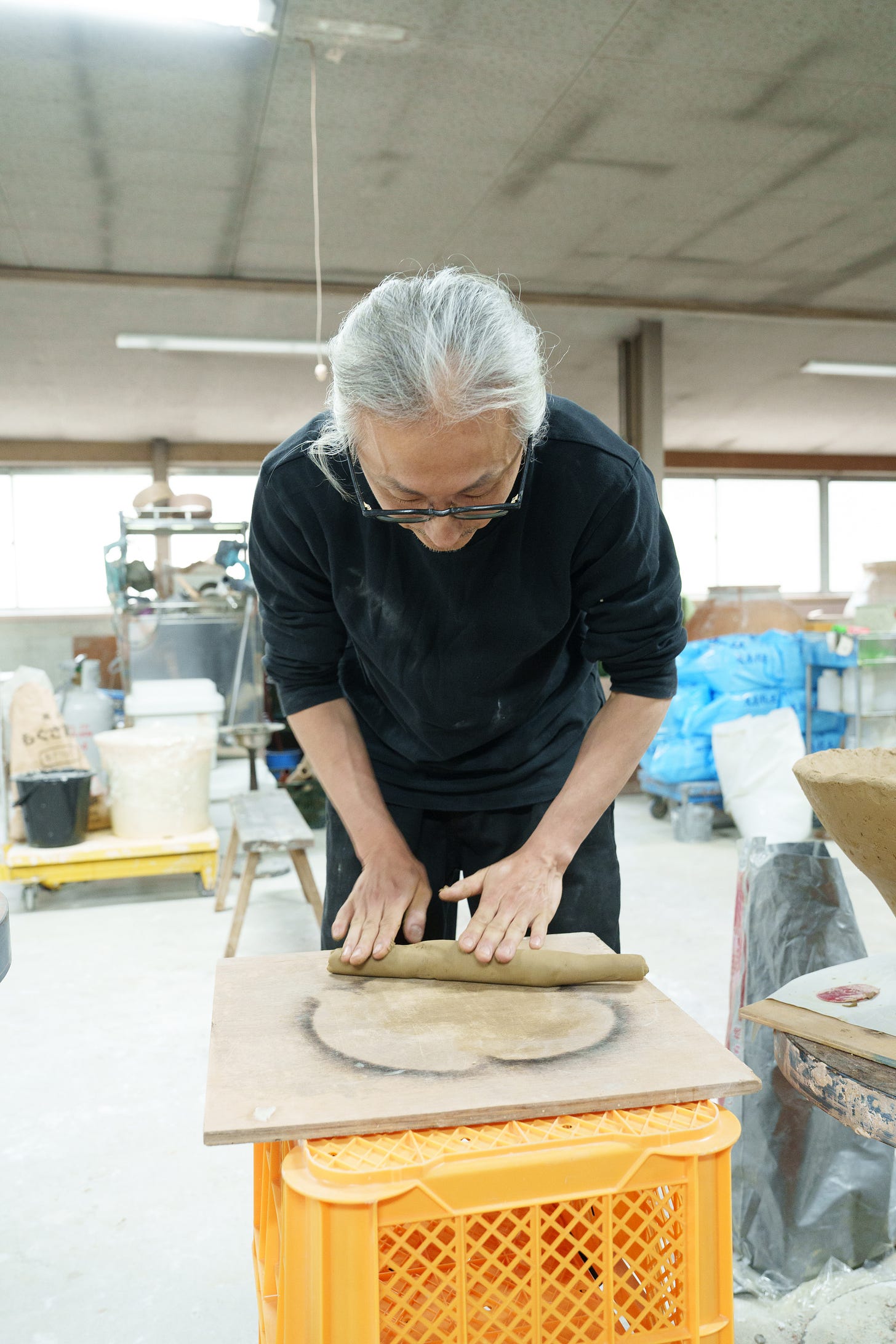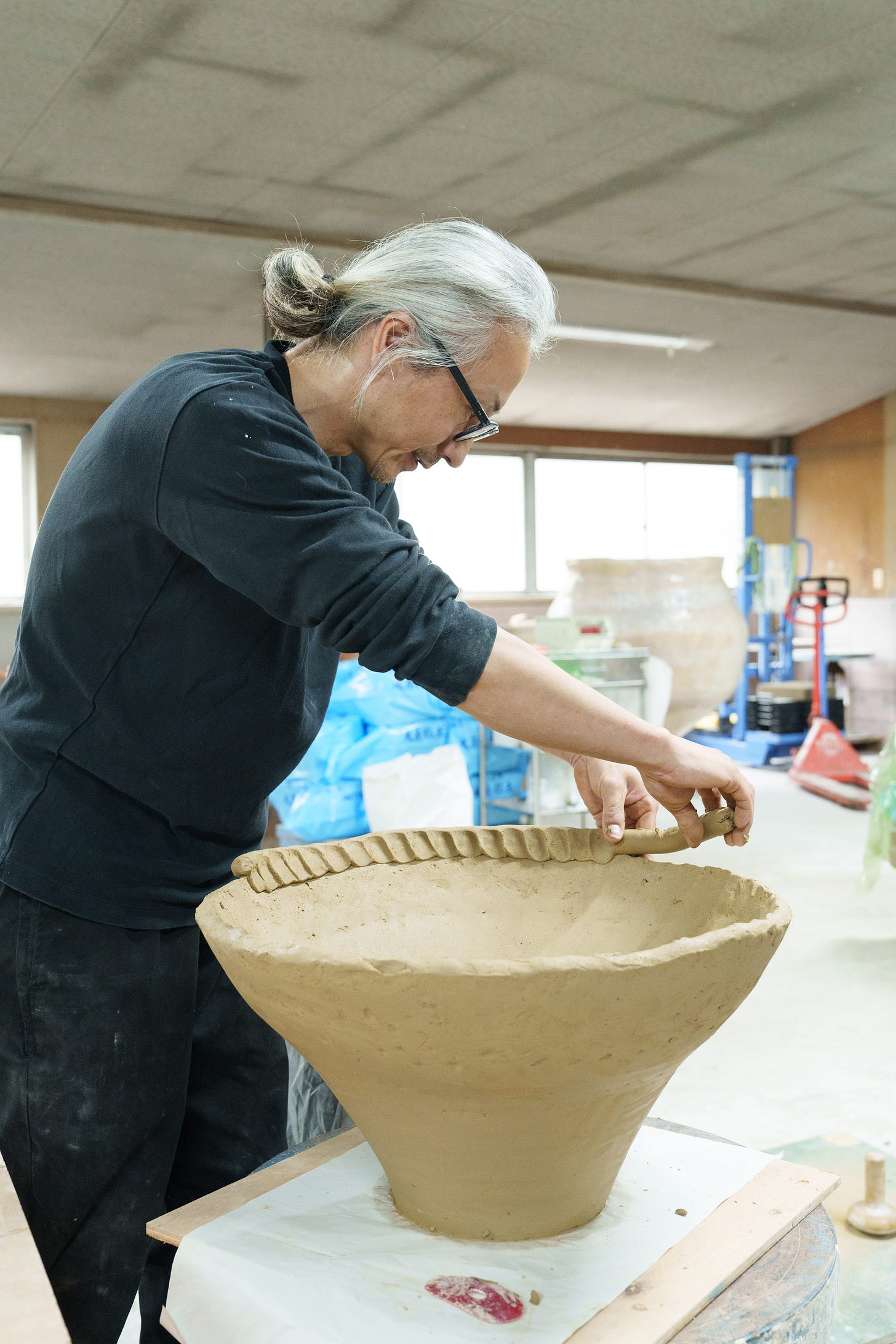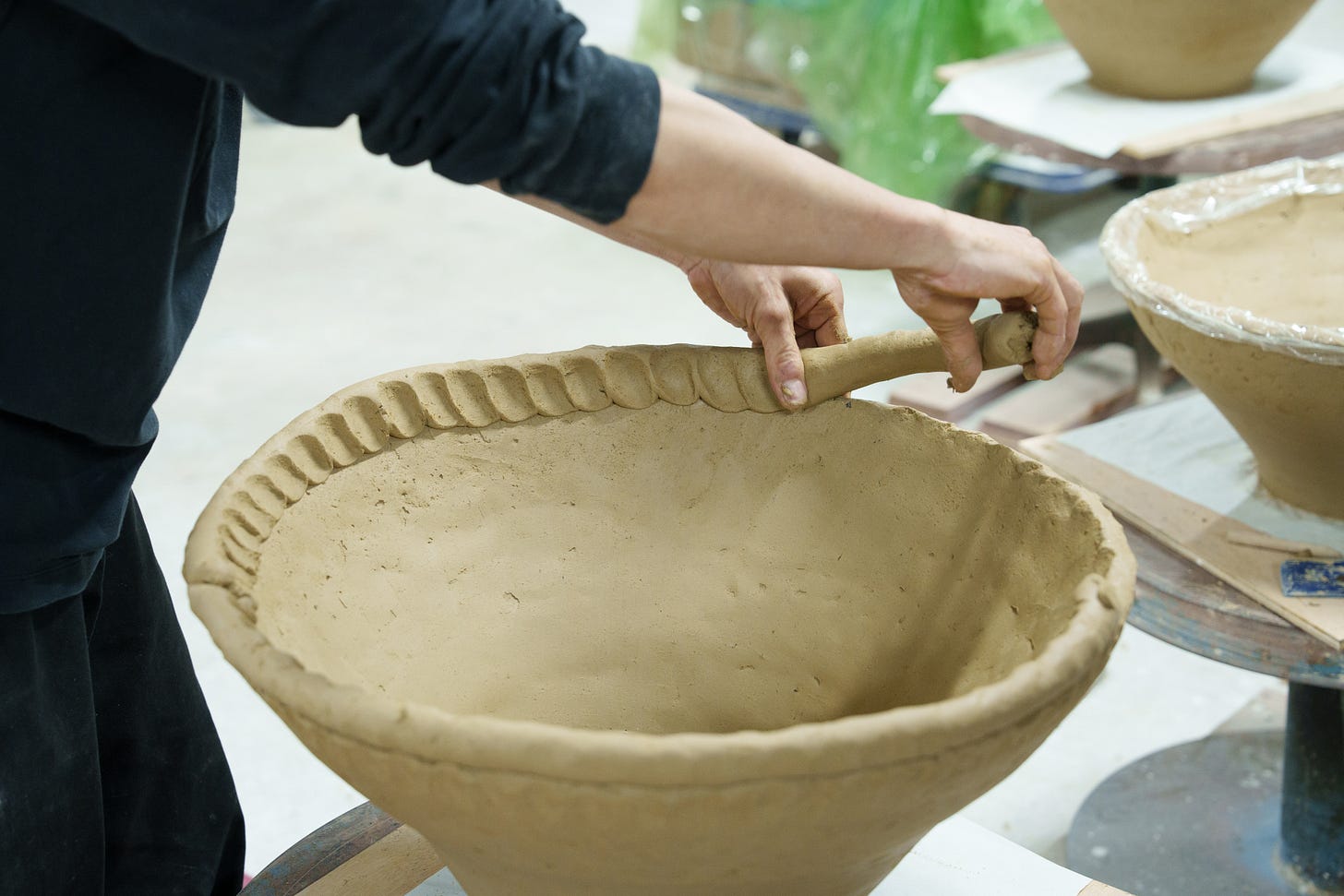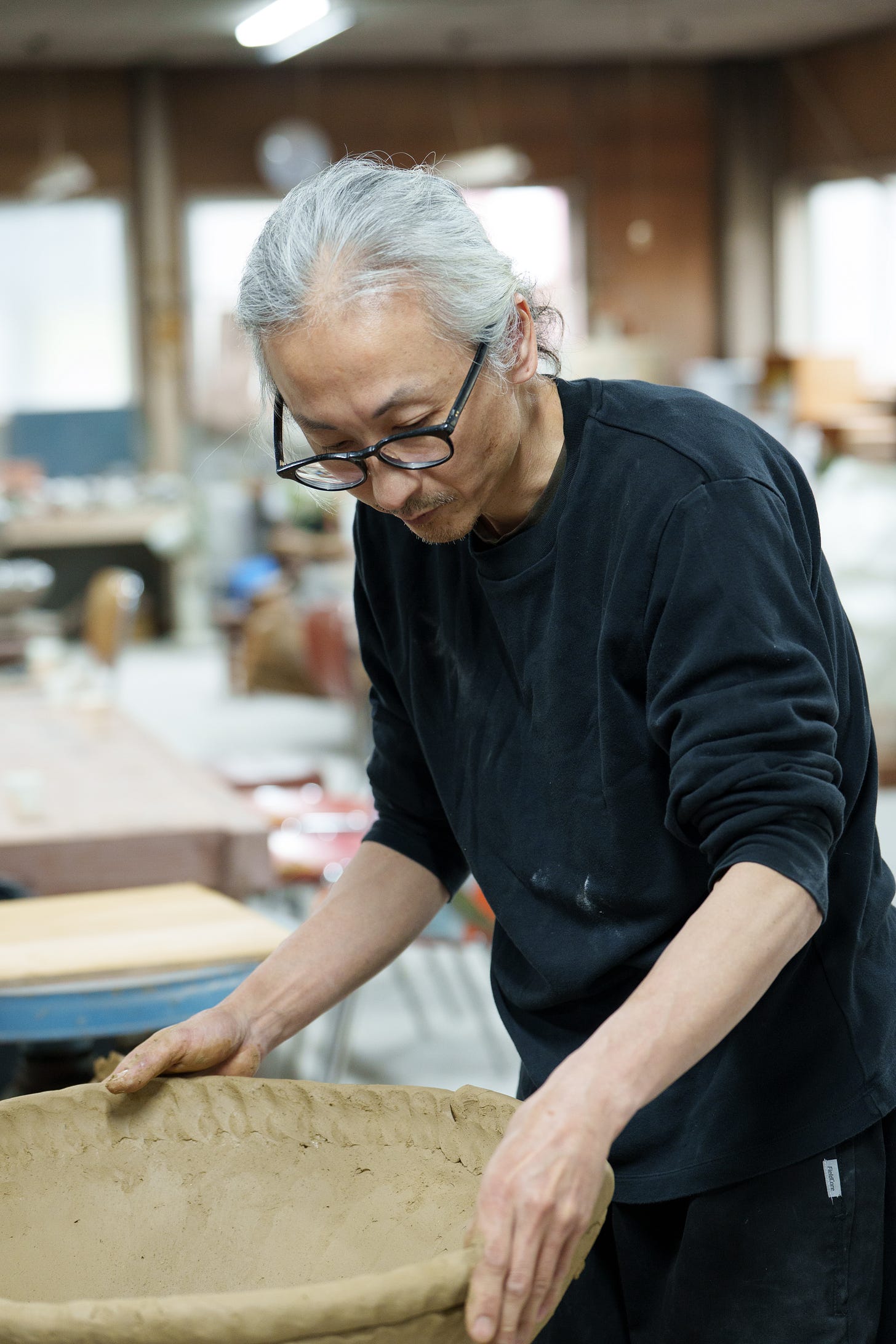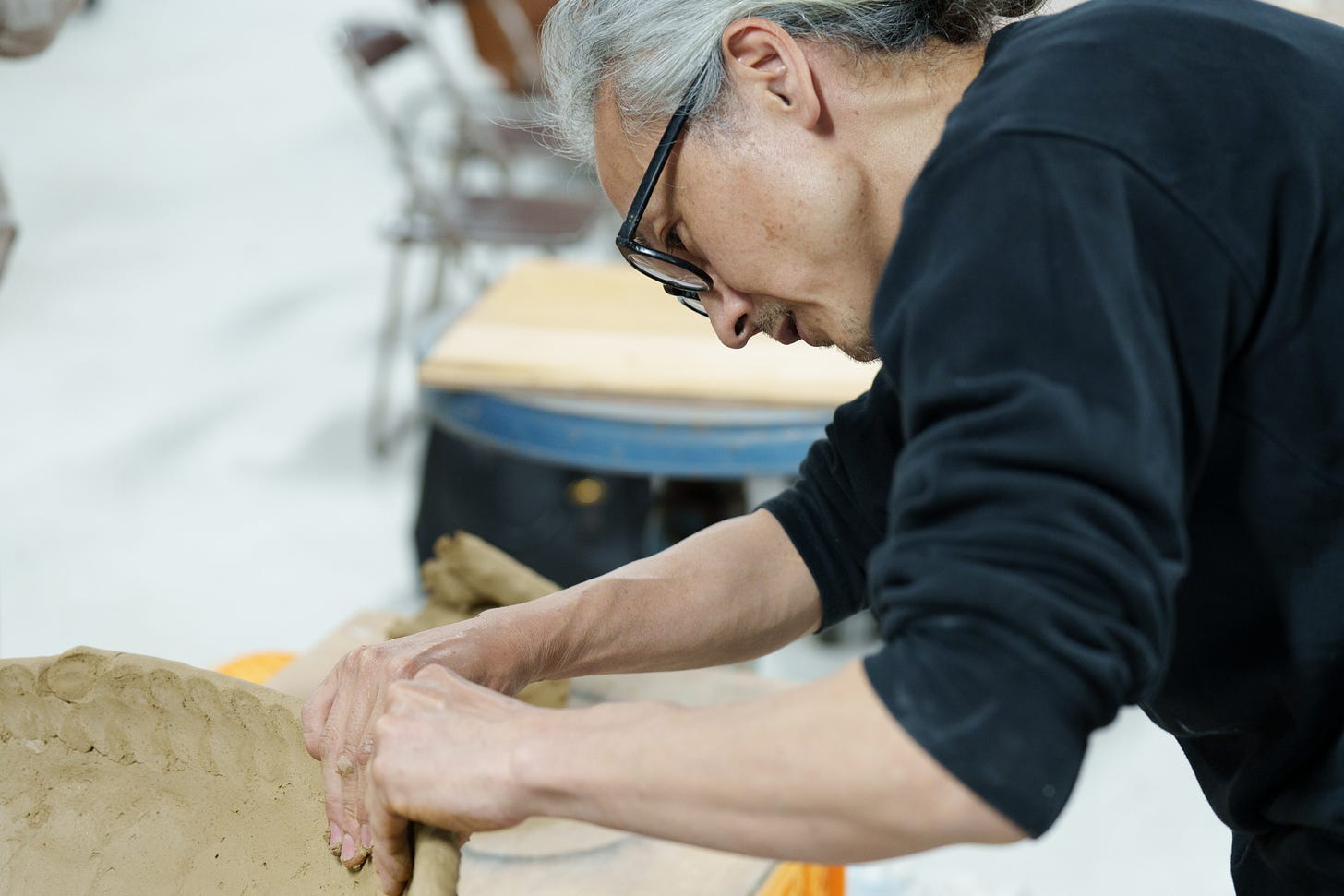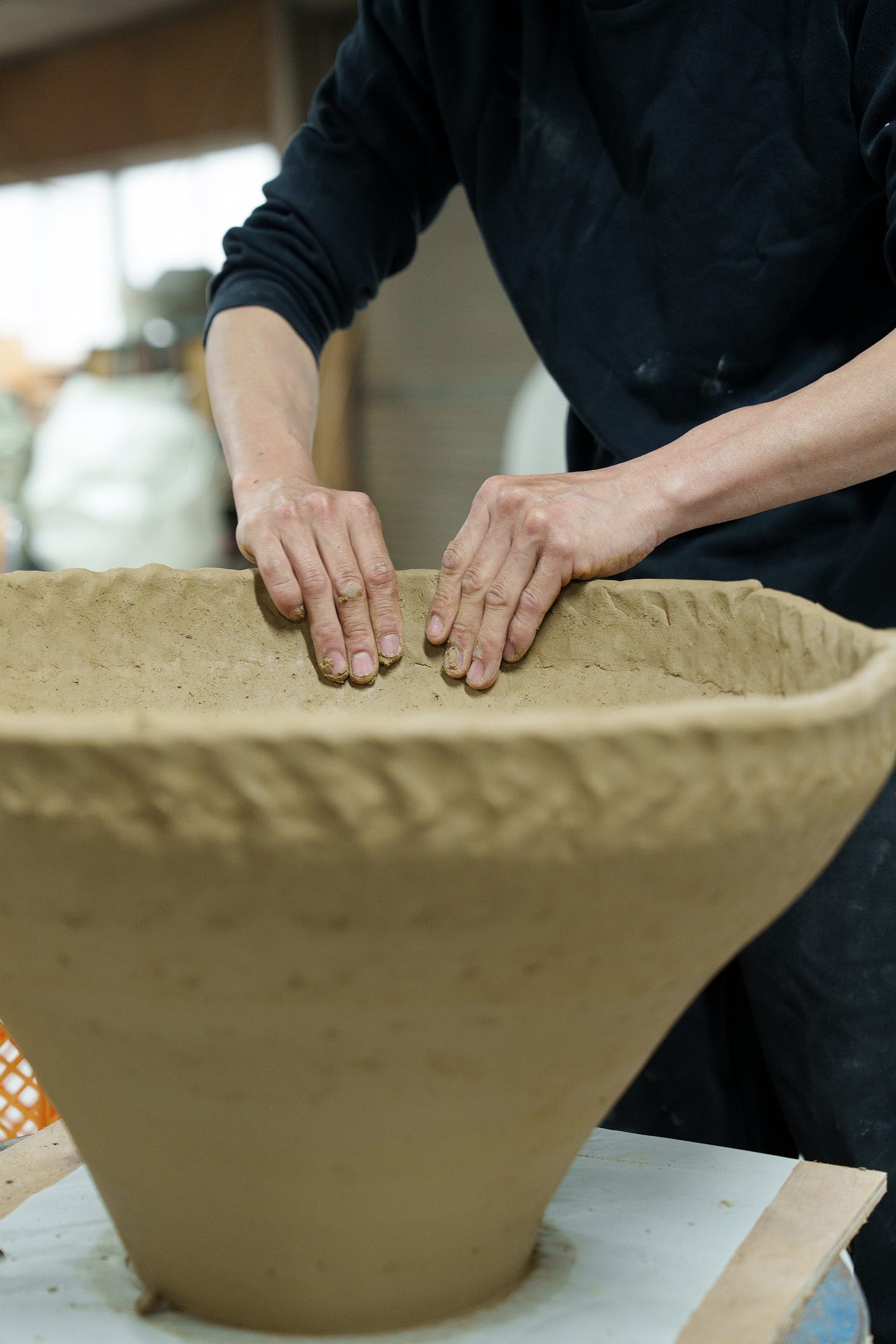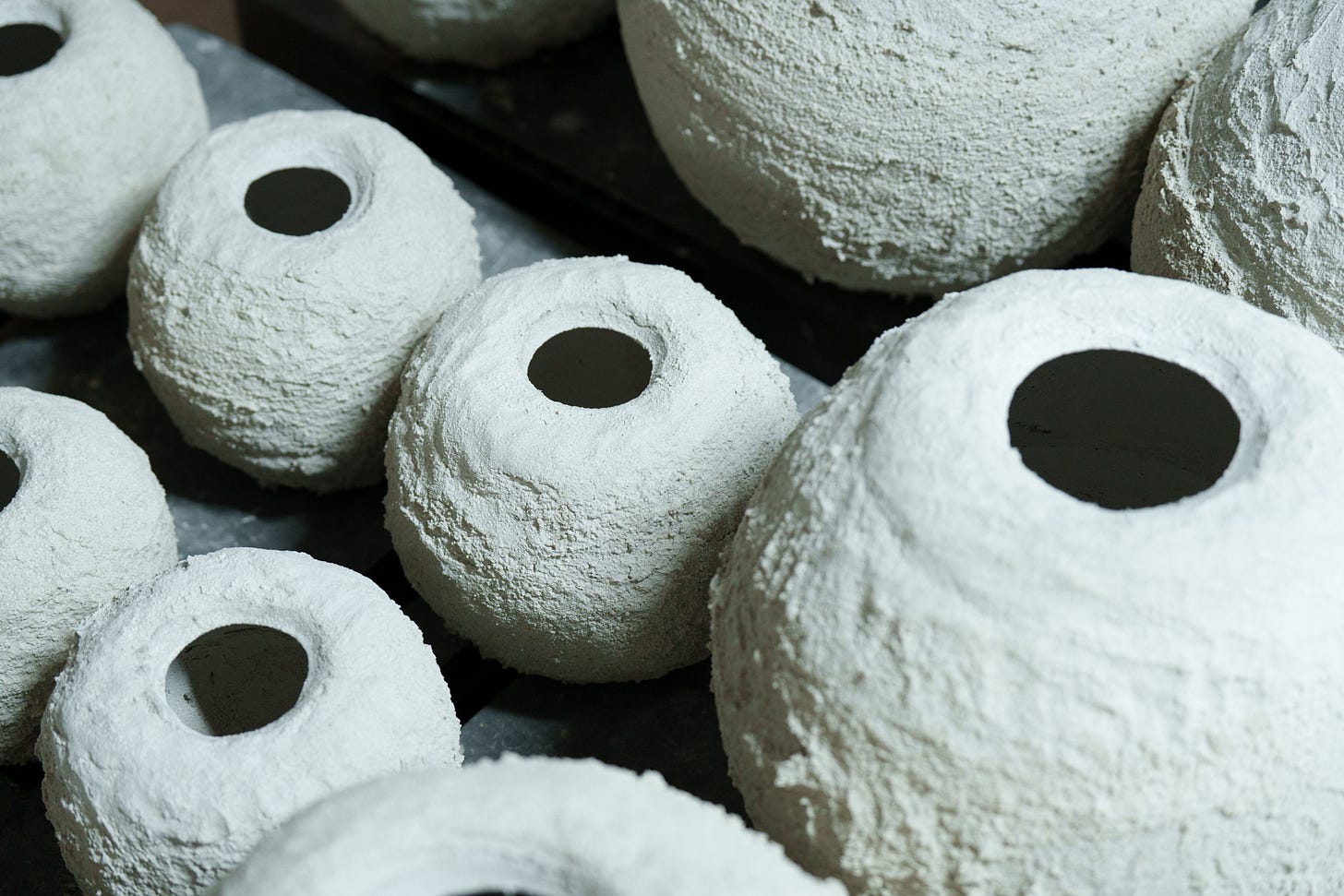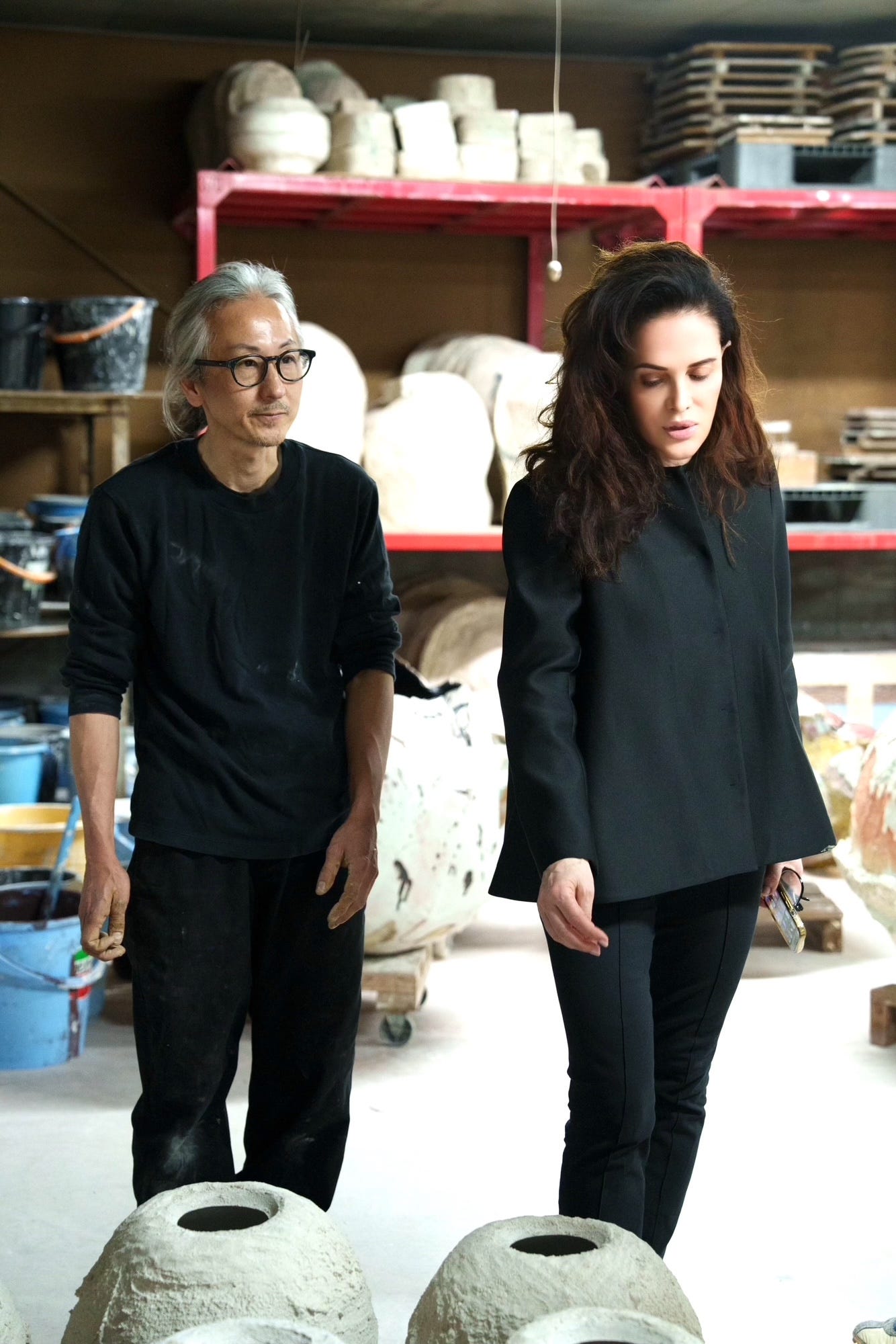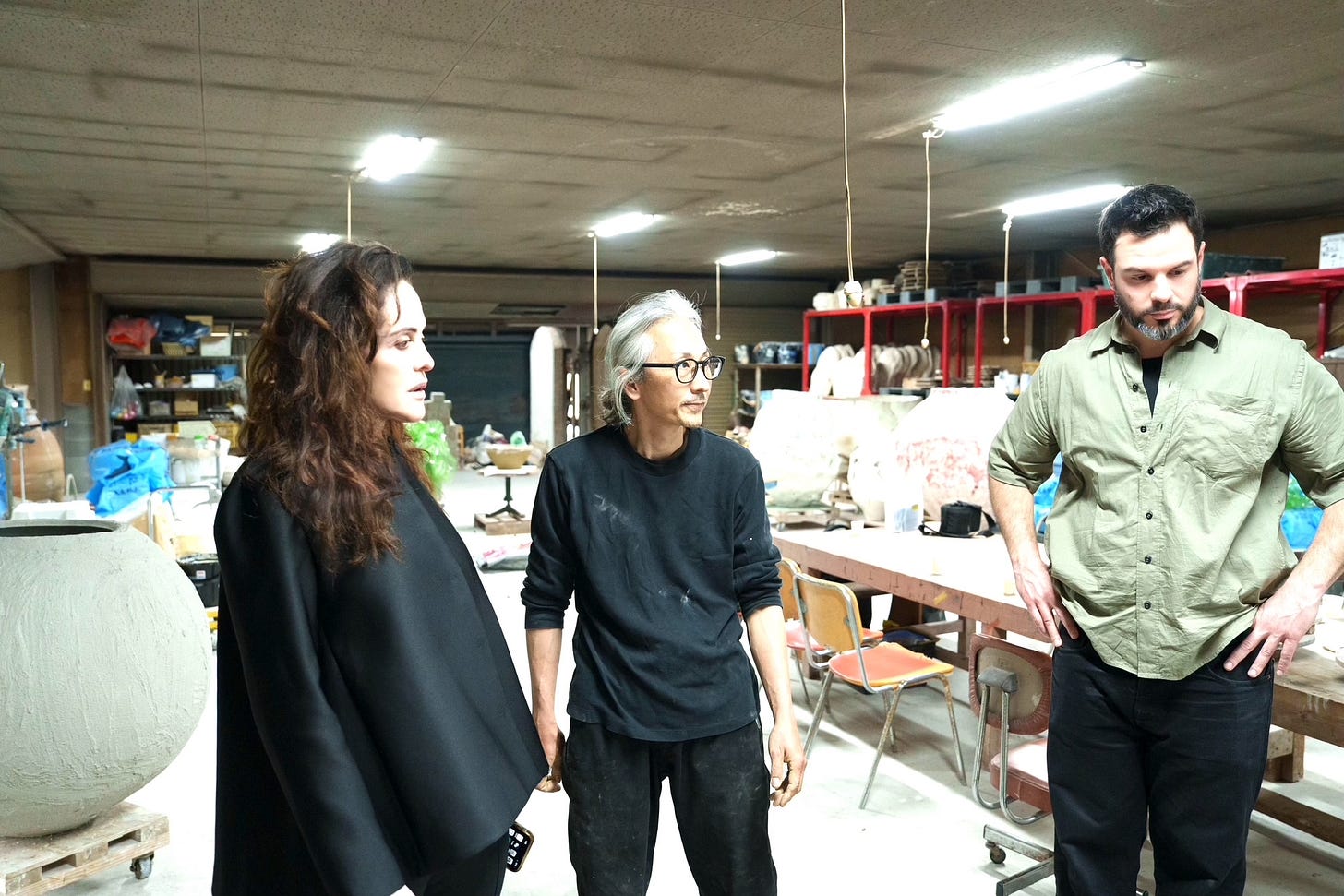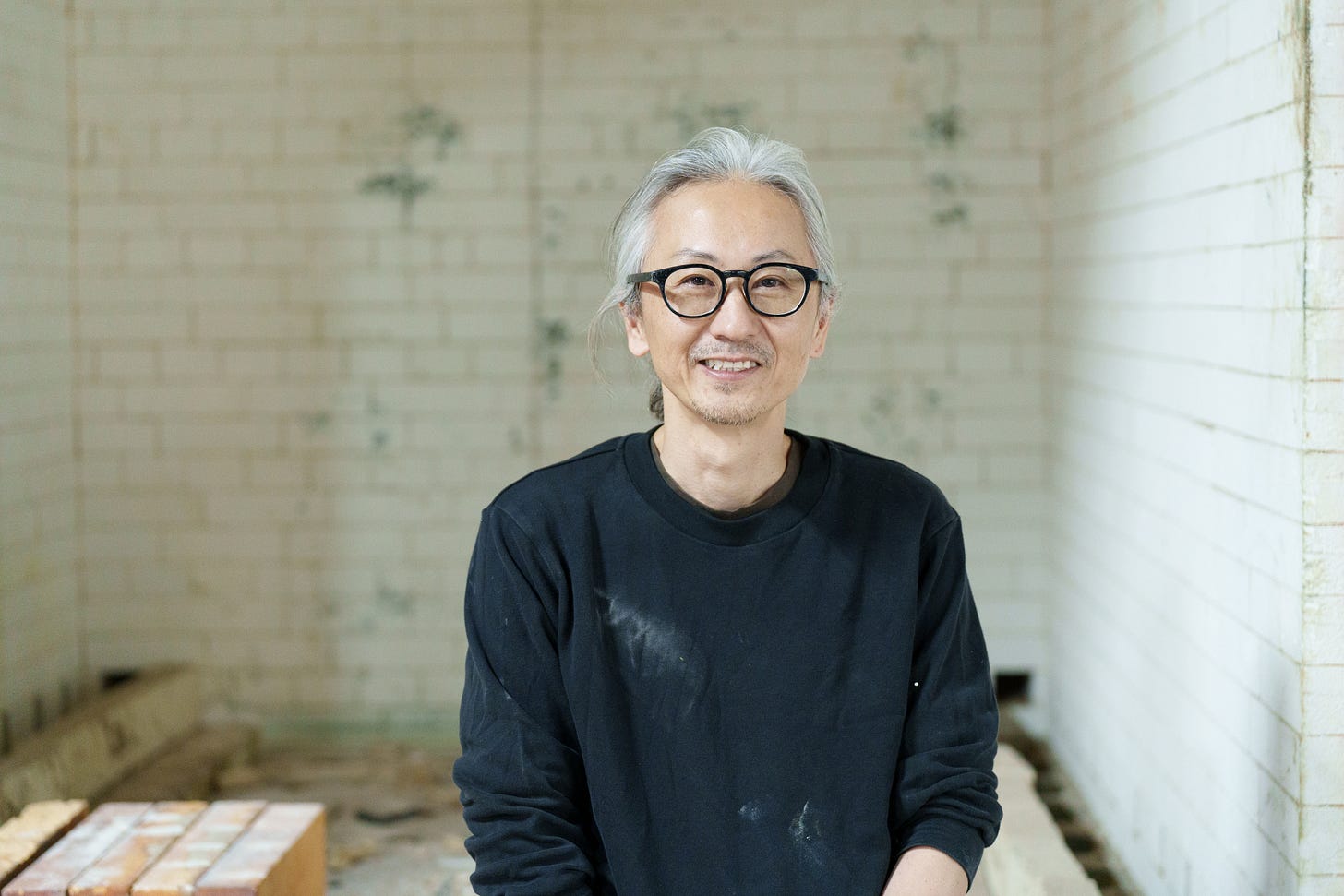Poetic Kogei: Yuji Ueda
Reinventing Shigaraki Pottery
Poetic Kogei
Among the most substantial achievements of contemporary kogei, which not only bring it to the heart of the contemporary art world, but also signify the ability to rethink traditions, is the transformation from the utilitarian to the poetic. By creating objects and sculptures in the mediums of the crafts—clay, glass, lacquer, bamboo, wood—which are fresh, surprising, and replete with narratives, the artists included in this chapter succeed in evoking an emotional reaction and an aesthetic experience on a level unknown in historical kogei. In the same way that poetry evokes stronger emotions than plain text, so too do the new Japanese crafts demonstrate an incredible and lasting impact. Whereas it is metaphors that convey deep meaning (or abstractions that capture experiences, spirituality, and emotions), the mediums of kogei—clay, glass, bamboo, fiber—powerfully transcend pure emotions.
Yuji Ueda (b. 1975)
Yuji Ueda was born and raised in Shigaraki, one of Japan’s historic cradles of pottery, known for its local stoneware and climbing kilns, classified as one of Japan’s six ancient centers for pottery. His parents owned a tea farm, and growing up between tea and clay, the two premier local industries, shaped Ueda’s desire to become a ceramic artist. The region is known for the production of distinctive clay figurines in the form of a comical raccoon dog, used in Japan as lucky charms, and attracting tourists to the area. As we drove toward Ueda’s studio, we passed by thousands of them on display in storefronts, in warehouses, and gardens, along the narrow roads; Udea’s work could not have been more different from the ostentatious folklore figurines of his birthplace.
In fact, his abstract contemporary art in clay exemplifies the loose affiliation between traditional folk Japanese ceramics and contemporary kogei, the topic of this series of articles, where the new generation of Japanese craftspeople and artists use craft mediums – bamboo, clay, lacquer, fiber, wood – to create contemporary art, both functional and non-functional. As you enter the expansive studio situated in a former factory, which he shares with his ceramicist wife, you immediately feel the energy and creative mood. He did not study ceramics in school, but upon graduating with a degree in chemistry, he was trained as an apprentice with legendary Shigaraki ceramicist Kamiyama Yasuhisa, who became known internationally for his mastery of wood firing and heavily textured pieces. Yasuhisa’s vision can be found in Ueda’s oeuvre.
While he has been fascinated and inspired by antique Japanese ceramics and works in the historical region, Ueda has succeeded in breaking away from the local conventions of the historic region in technique, conception, and subject matter, and today is considered one of Japan’s most intriguing clay artists. He understands both tradition and the universal world of contemporary art and found a personal way to negotiate the two in his own voice.
Ueda has transformed the functional vessel—his key form—into a non-functional fine art sculpture. He uses the method of coiling as he hand-builds his forms of thick coil of local red clay. But the vessel serves only as the canvas which he then ‘dresses up’ with special skin—his signature—turning the simple form into a complex artistic expression. Experimentations with glazes and firing techniques have led him to invent that rough, somewhat brutalist skin rendered in multiple layers of textures and colors, which bring a vibrant and energetic spirit to the otherwise plain vessel. ‘I value embracing the inherent texture of clay, as well as cracks, peeling, and distortions that occur by chance, and elevating them to elements of beauty,’ he told me. But ultimately, he seeks to ‘express the relationship between people and nature, and the vitality inherent in the material itself,’ which is the core narrative of his work.
Ueda’s pieces are best expressed when they come in monumentally-scaled formats, because then they emphasize the spontaneous, gestural, non-representative imagery and the special skins, which add mass to the sculpture, while retaining their basic form. At times, they are cracked, and at other times, it looks as if the skins are going to peel off. He belongs to a group of artists who value spontaneity and improvisation over predetermined pattens and ideas, preferring the unexpected and uncertainty over the predictable and the constant. He loves revealing the traces of his hands, allowing the process to speak. Don’t look for the pristine, minimalistic perfection which we see in much of the work by other kogei artists. Ueda’s sculptures are connected and embody nature in the lens of the Japanese philosophy of the wabi-sabi. And just as in nature, the beauty of his sculptures is seen in the aging, in the roughness, in the impermanence. Yet, while the core of his form is the simple vessel, the balance between the simple form and the complex skin defines his art, and will place him in the narrative and historical story of Japanese ceramics. His taste and sense of form bring a balance of colors and glazes, as his sculptures are always surprising and unexpected, provocative and subversive.
Photography by © Takuro Kawamoto.



